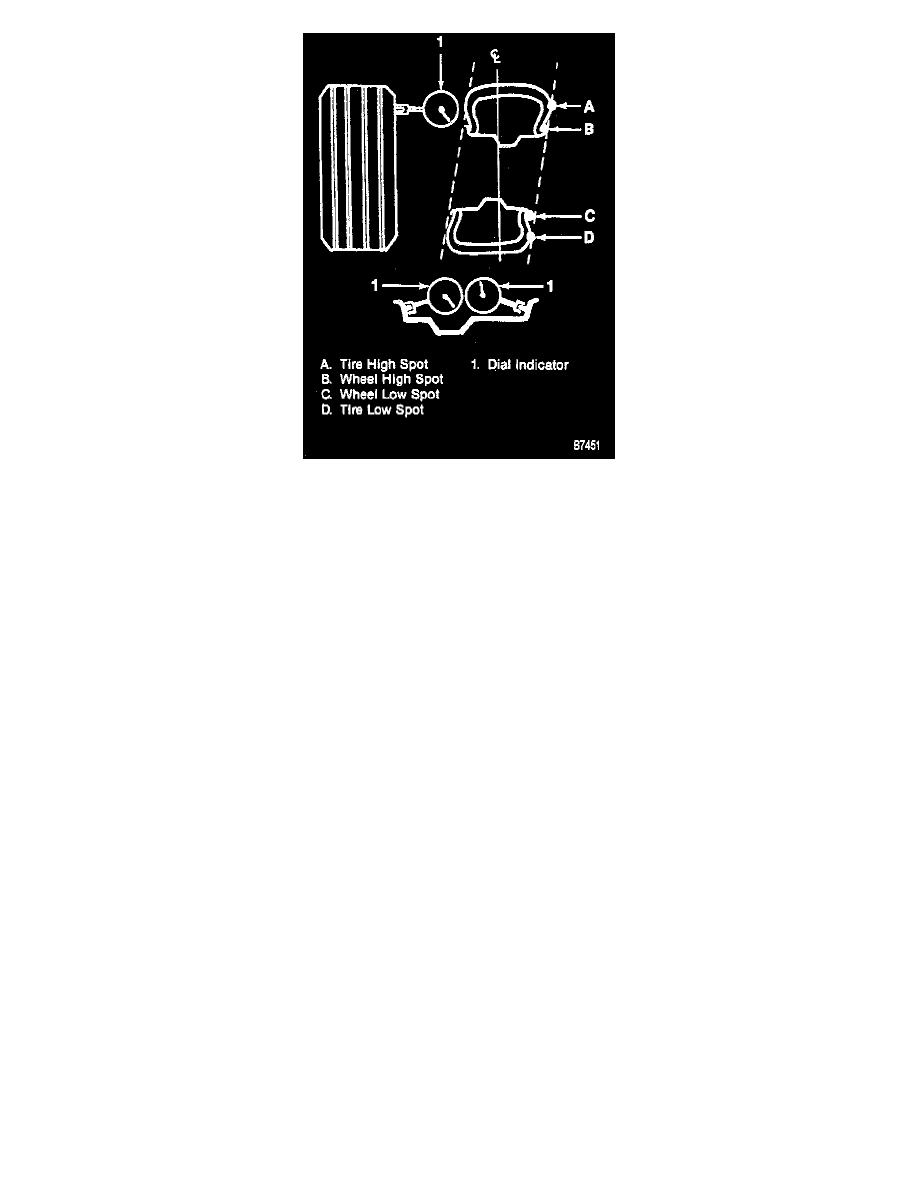K 1500 Truck 4WD V8-5.7L VIN R (1997)

LATERAL RUNOUT
Lateral runout is a sideways variation causing a twist or wobble and is measured on a side surface. On the tire and wheel assembly, measure the
sidewall of the tire as close to the tread shoulder design edge as possible. The total runout is the reading from the gage, and the high spot is the
location of the maximum runout. On a rim, if either flange is beyond guidelines, replace the rim.
-
Aluminum Wheels - 0.76 mm (0.030 inch)
-
Steel Wheels - 1.14 mm (0.045 inch)
MEASUREMENT PROCEDURES
1. Inflate the tires to specifications.
2. Warm up the tires prior to taking measurements to eliminate flat spotting.
-
Newly installed tires usually do not require warming up.
3. Raise vehicle and support with safety stands.
-
If measurements will be taken off the vehicle, mount each tire and wheel- assembly on a dynamic balance machine.
4. Mark the tire and wheel assemblies for exact replacement.
a. Mark a wheel hub bolt and its exact position on the wheel.
b. Mark each tire and wheel assembly for replacement on the exact hub/rotor assembly.
5. Take either a radial or lateral runout measurement.
a. Place the dial indicator in position.
b. Rotate the tire and wheel assembly (or just the wheel) to find its low spot. Adjust the dial indicator to read zero.
c. Rotate again to verify the low spot location-the dial indicator must return to zero.
d. Disregard any instantaneous dial jumps due to welds, paint runs, scratches, etc. on the wheel.
e. Rotate the tire and wheel assembly (or just the wheel) and note the amount of variance (runout) from zero. Locate and mark the high spot.
6. If there is a large difference in runout measurements from "ON" vehicle to "OFF" vehicle, the runout problem is likely due to excessive runout of
the bolt circle or hub.
7. If measured runout is not within the guidelines, proceed to "Vectoring" to correct the problem.
General Information
Vectoring is a technique used to reduce radial or lateral runout and even dynamic balance on tire and wheel assemblies. Vectoring can be accomplished
by the positioning of the tire on the wheel and the positioning of the tire and wheel assembly on the hub/rotor.
NOTE: Always rebalance the tire and wheel assembly after vectoring.
Tire to Wheel Vectoring
1. Determine which runout needs to be minimized. Determine visually.
